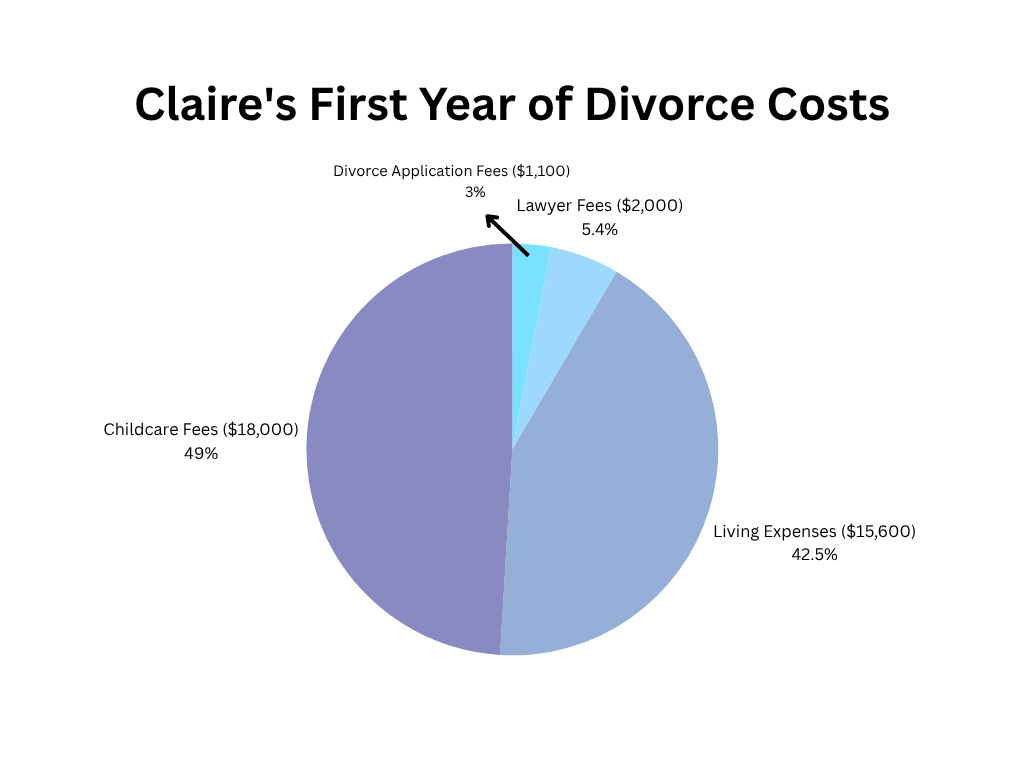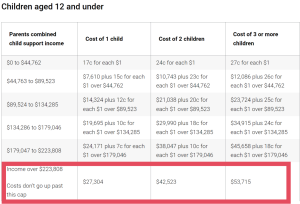
A Misleading Decline
According to a report provided by the Australian Institute of Family Studies (AIFS) in February 2025, in 2023, Australia’s divorce rate had dropped to its lowest level since the Family Law Act was put into effect in 1975. I admit that at first glance these figures seem promising.
Dramatically, The Separation Guide, an Australian separation and divorce advice platform, released a set of figures in January 2025. The platform saw a 40% year-on-year spike in separation enquiries. The decline in Australia’s divorce rate is misleading. It doesn’t reflect healthier relationships or stronger families.
The Price of Motherhood
Lawyer fees ($2,000) + divorce application fees ($1,100) + living expenses ($15,600) + childcare fees ($18,000) = $36,700. Claire said: “I estimated the cost for the first year, assuming the divorce goes through.” The high cost of divorce has deterred Claire from getting divorced.
Prior to giving birth, Claire had a promising career in marketing. “I couldn’t leave my children. I went from being a full-time, white-collar worker to one of the most precarious labourers out there. No one wanted to hire a mom who can’t work overtime.” Claire said.

“Motherhood Penalty”, a term that counts as old-fashioned in academic field, is still a verb in women’s daily lives. As a core concept in sociology and labor economics, it refers to the systematic disadvantages that women experience at the workplace, economic, and social levels as a result of childbearing and childcare. These disadvantages are manifested in declining wages, impeded career advancement, and lower labor participation rates.
The data don’t lie. According to the Australian Treasury Working Paper, in the first five years of a child’s life, the mother’s income decreases by an average of 55%, while the father’s income remains virtually unchanged. The result is a gender wage gap between men and women. Data from the Australian Bureau of Statistics 2024 shows that for every dollar a man earns, a woman earns only 88 cents. Over the course of a year, this difference accumulates to $12,807.60.
A major factor in the creation of the motherhood penalty also includes the fact that many mothers will spontaneously go for highly flexible but low-paying jobs in order to balance their family responsibilities. This spontaneous behaviour also discloses many of the invisible rules of society, where children inherently need more companionship from their mothers.
There can also be financial pressures. Even if women obtain reasonable support under the law, they cannot avoid the economic pressure brought by childbirth. In Sydney, the daily childcare fee is $137.73, but actual expenses are often higher than this figure.
Sophie was officially divorced from her ex-husband last year in a successful and harmonious process. Their child is being raised by Sophie, she and her ex-husband have reached the maximum amount of child support payments. The Australian government requires a child to be raised for about $27,000, so her ex-husband is paying $13,500 a year. Sophie lives in Kellyville, where the neighbourhood kindergarten costs $170 a day. Sophie has also had to change jobs due to childbearing, resulting in lower wages. “Despite my ex-husband’s maintenance, I still need help from my parents to ease the burden of childcare.” Sophie said.

Legal Systems, Unequal Outcomes
By law, couples need to be separated for one year before they can file for divorce, and research by The Separation Guide shows that the average cost of separation and divorce in Australia is $21,000 per person. If taken to court, the average cost is between $50,000 and $100,000 and can take up to three years.
Crystal was an extreme case of a divorce in which her ex-husband had emotionally, physically and financially abused her. During the marriage, her finances were controlled by her ex-husband. During the divorce process, her ex-husband continued to harass her through the legal system and transferred property. She is still at the stage of the divorce process where she has spent approximately $50,000 to $60,000 in legal fees. Although she received significant financial support from the Australian government due to her special circumstances, she personally paid approximately $20,000 in legal fees. That’s one-fifth of her annual salary.
Legal fees can add up when disagreements arise during the process, whether they are about finances, child custody or property division. The high cost of court may force women to turn for long-term separation rather than immediate divorce. This has led to a discrepancy in the data between the surge in counselling and the decline in divorce rates. At the stage of property division, the law does not sufficiently recognize women’s non-financial contributions within the marriage, leading to a further increase in their cost of divorce. The Australian government reports that women are often disadvantaged in property claims because domestic work is not adequately valued.

Sylvia, who has worked in a law firm for five years, reflects that the number of women coming to her for divorce counselling substantially exceeds the number of men. Most of their questions focus on property division and how to obtain adequate financial security during and after the divorce. The first reaction of women with children who are faced with financial problems is to want to repair the marriage, not dissolve it. Emotional and financial pressures due to children are subjective and objective factors that prevent women from divorcing.
Why women stay because they can’t afford to leave
Obstacles that prevent women from getting divorced include the economic squeeze caused by parenting time, the lack of attention to non-economic contributions in marriage, and the high cost of legal litigation. This reflects the persistence of a gendered economic division of labor and inequitable distribution of resources in the social fabric. The decline in Australia’s divorce rate further demonstrates the socio-economic plight of women. Despite the development of gender equality in all sectors of the country over the past few decades, the price that women have paid for “divorce” has not been properly addressed. Behind the declining figures lies a silent compromise for women, as the solidification of childcare responsibilities and gender roles forces them to lose their voice in society and in the home.


Have you ever heard the term “Motherhood Penalty”? Please give your answers in the comments section!